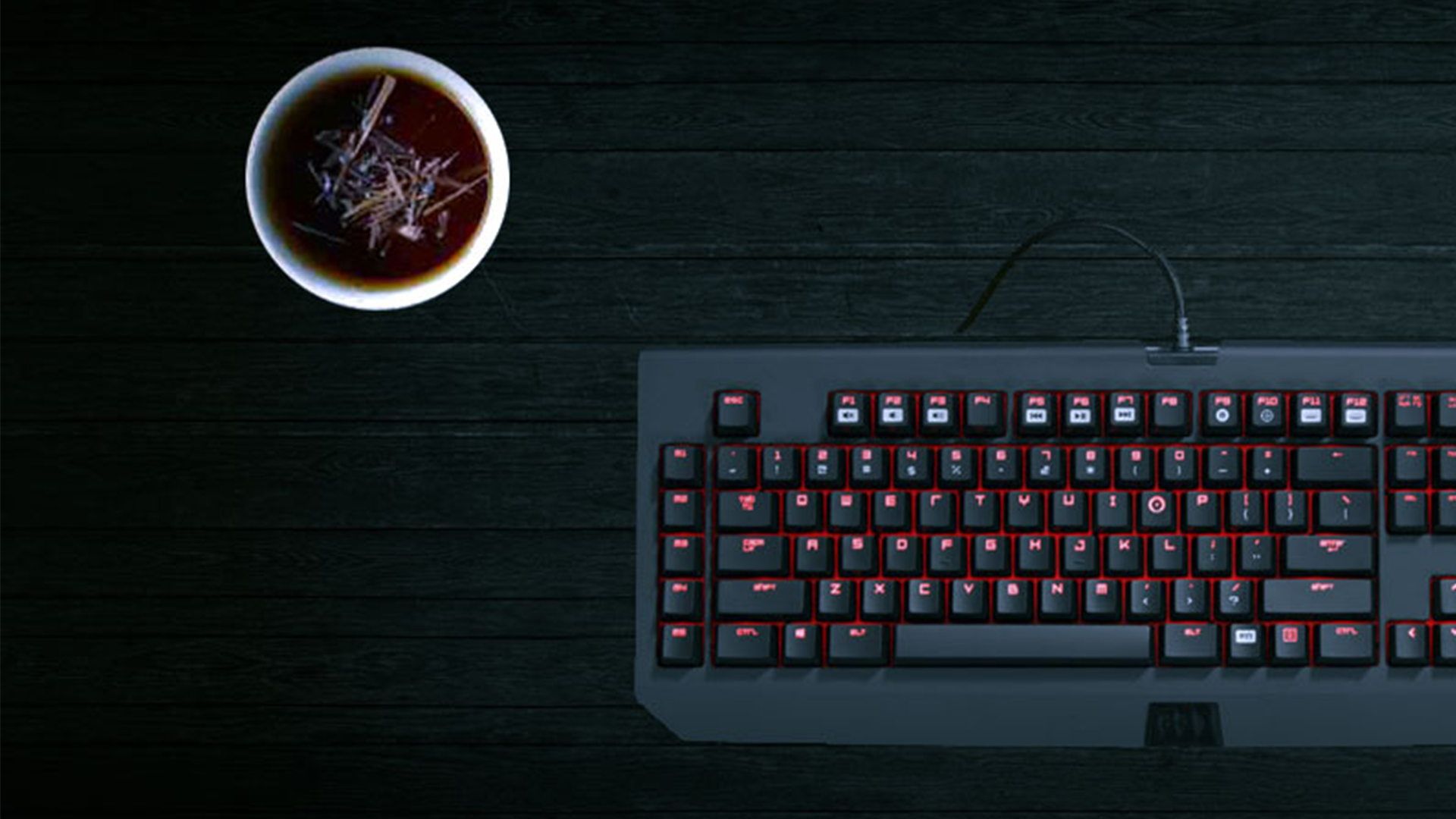
incorporation of heterogeneous systems
Vertical Engineering
tags
meta
- Length1199 wörter
- Reading Time4 min
- Create
Engineer
Advise10%
90%
30%
t.o.c.
- Introduction
- Challenge 1: The battery
- Challenge 2: The input capacitors of the inverter
- Challenge 3: The data aggregation
- Downloads

Intelligent solutions rather than innovations are the main requirements to fulfill of what we expect from technology in the 21st century. In order to provide functionality, isolated single modules are often not enough - it is the embedding and adaption of elements, modules and software that turns a mere collection of technological devices into a productive technological solution.
For nature’s sake and for autonomy’s benefit - for a long time, the increasing usage of solar energy has rated as a promising escape from numerous problems when dealing with the energy industry. But when using only about 20% of the self-produced energy it becomes obvious that the concept has a lot of development potential. Electricity is produced in the daytime, but hardly consumed. Electricity is consumed in the evening and at night, but not produced. No sun - no electricity - no benefits from a pv system.
The necessity of a storage system for solar energy is self-explanatory, just like the function principle of the storage: A battery is connected to the house’s network via inverter, stores excess energy and provides it again only when it is needed.
The device requirements are easy to describe but all the more complex in their implementation. The device has to guarantee a mode of operation that seamlessly integrates into the lifestyle habits and usage scenarios. This includes the user being informed about the activities of the device and all the data is processed and then comprehensively visualized to the user.
In order to be able to achieve this, various components of the vertical value chain need to be matched and adjusted to each other:
Considering the technical features of various battery systems when in usage for stationary applications, the advantages of a lithium ion battery over a lead battery are apparent.
Nevertheless, the technical superiority of lithium ion batteries come with new challenges: the determination of the state of charge requires more effort than with lead batteries and the cell data has to be monitored continuously to be able to recognize abnormal behavior by testing various parameters (cell voltage, cell temperature etc.), reaction to it and, thus, guarantee operating safety.
With these challenges, the engineering approach for kalbeck.media has the right attributes to provide the correct tools and supplies the flexibility for the development of solutions.
Each of them may be considered technically flawless, however without reference to the future of the overall system. The single components where far from being greater than the sum of their parts.
After the identification of vulnerabilities through the data gathered from extensive tests and analysis, various solution approaches were developed. According to the facts that could be gained from analysis and testing, new algorithms had to be developed with the manufacturers of battery cells and BMS in order to provide better loading- and discharging curves to the system. This was done to obtain better data about the systems state of charge. In order to make the system operate in a controlled manner, the control logic had to be adjusted; the charge and discharge power were integrated as additional parameters into the system logic and the system behaviour at limit ranges normalized by hysteresis.
Capacitors are elements that are able to store electrical energy in an electrical fields for a short time. The structure is always the same principle: two electrical conductors separated by an insulating material.
When voltage is applied to the capacitor, an electric field is formed between the two plates. The plate with a negative pole of the power supply (for example battery) absorbs electrons, while the plate on the positive pole emits electrons to the battery. This continues until the capacitor has the same voltage as the voltage source.

V0 being the loading voltage, Ƭ0 the time constant of the system.
Therefore the increase in voltage at the beginning is very fast and then flattens substantially. After 1x Ƭ0 about 66% of the final voltage is reached and after 5x Ƭ0 approximately 99.3% - this is considered a charged capacitor. When loading a capacitor in a DC system, the relationship between voltage and current must be observed:


The current flow in the capacitor is therefore proportional to the change of the voltage. Accordingly, the charging currents are very high at the beginning – especially when only a weak resistance protects the condenser – and then become weaker with increasing charge of the capacitor.
The following graphics compare voltage (in red, f(x) = 1-e^-x) and current (in blue f(x) = e^-x).
Regardless of the exact inverter topology, input capacitors are necessary components to buffer energy fluctuations. The capacitor compensates ripples or spikes and decouples inductive effects of the DC power source to the power bridge (see the following) Whitepaper by Michael Salcone and Joe Bond).
Capacitors are able to absorb energy very quickly – and that is what turns the connection of the non-current-limited M48 modules and the XTM inverter into an actual problem: the uncharged capacitors load as quickly as possible. 400 A of current were common, and in rare cases up to 1000 amperes.
Current flow of this magnitude can cause the battery relays to be welded together. A disconnection of the battery is no longer possible in this case and the BMS cannot protect against deep discharge of the battery.
The cause of the problem was the appliance manufacturers lack of a bigger picture about the structure of the overall system. For the battery manufacturer it is not foreseeable that the first element following the battery would would be capacitors without resistors; and the inverter manufacturer could not expect a battery system that can easily provide 400+ amps.
kalbeck.media identified this weak spot and advised the producers during the development of various methods of resolution. After some simulation test runs with varying parameters, the most suitable solution was chosen and diverse variants were tested for reliability. A relay initially closes the circuit including a series resistor, thereby increasing the time constant (Ƭ=RC) and allowing the capacitors to charge slower. Thus, the initial charging currents are much lower. This is done so that neither capacitor nor relays are overburdened.
This reliable protection for batteries, relays and inverters is also inexpensive to implement. In order to not waste energy unnecessarily, the series resistor is bypassed after a few milliseconds and at the same time the capacitor is sufficiently charged to not cause abnormally high current.
The photovoltaic storage solution neoStore collects a plethora of data each day. In order to be able to demonstrate the functionality and the benefit of the system transparently to the user, it requires preprocessing for them to be easily and pleasantly perceivable. All of the components necessary for that purpose were developed by kalbeck.media.
neoGrid provides the basis of the neo-ecosystem: a solid and scalable server for neoStore data.
Special consideration was bestowed upon the kaidoo listener; the module that takes on the communication with the neoStores. The listener is tailored to the individual communication interfaces of the storage systems, no matter whether they are crude data wrappers like TCP2RS by Circutor or if they are codeable data loggers like the ExtensionBox by kalbeck.media.
The data is recorded by neoGrid and subsequently stored and processed for later usage.
neoControl is the visualization platform for the end user; the processed data is presented to the customer in a pleasant and intuitive manner.
By using kaidooscreen it is possible to provide intelligent data visualization in a modern, appealing design and extend it with new functions at will. Social media integration is just as feasible as gamification elements or reporting functionality.
The examples of neoGrid and neoControl show one thing: The aim - the story that is told - is defined between the poles of meaningfulness and entertainment. The way to get there is paved by the engineer.

 PDF | 227.85 KB
PDF | 227.85 KB

 PDF | 155.66 KB
PDF | 155.66 KB

 PDF | 3.85 MB
PDF | 3.85 MB

 PDF | 236.14 KB
PDF | 236.14 KB
The necessity of a storage system for solar energy is self-explanatory, just like the function principle of the storage: A battery is connected to the house’s network via inverter, stores excess energy and provides it again only when it is needed.
The device requirements are easy to describe but all the more complex in their implementation. The device has to guarantee a mode of operation that seamlessly integrates into the lifestyle habits and usage scenarios. This includes the user being informed about the activities of the device and all the data is processed and then comprehensively visualized to the user.
In order to be able to achieve this, various components of the vertical value chain need to be matched and adjusted to each other:
- Battery
- Battery Management System (BMS)
- Inverter
- Control electronics
- Data transfer
- Serverinfrastructure
- End user displays
Challenge 1: The battery
Considering the technical features of various battery systems when in usage for stationary applications, the advantages of a lithium ion battery over a lead battery are apparent.
Nevertheless, the technical superiority of lithium ion batteries come with new challenges: the determination of the state of charge requires more effort than with lead batteries and the cell data has to be monitored continuously to be able to recognize abnormal behavior by testing various parameters (cell voltage, cell temperature etc.), reaction to it and, thus, guarantee operating safety.
With these challenges, the engineering approach for kalbeck.media has the right attributes to provide the correct tools and supplies the flexibility for the development of solutions.
Each of them may be considered technically flawless, however without reference to the future of the overall system. The single components where far from being greater than the sum of their parts.
After the identification of vulnerabilities through the data gathered from extensive tests and analysis, various solution approaches were developed. According to the facts that could be gained from analysis and testing, new algorithms had to be developed with the manufacturers of battery cells and BMS in order to provide better loading- and discharging curves to the system. This was done to obtain better data about the systems state of charge. In order to make the system operate in a controlled manner, the control logic had to be adjusted; the charge and discharge power were integrated as additional parameters into the system logic and the system behaviour at limit ranges normalized by hysteresis.
Challenge 2: The input capacitors of the inverter
Capacitors are elements that are able to store electrical energy in an electrical fields for a short time. The structure is always the same principle: two electrical conductors separated by an insulating material.
When voltage is applied to the capacitor, an electric field is formed between the two plates. The plate with a negative pole of the power supply (for example battery) absorbs electrons, while the plate on the positive pole emits electrons to the battery. This continues until the capacitor has the same voltage as the voltage source.

V0 being the loading voltage, Ƭ0 the time constant of the system.
Therefore the increase in voltage at the beginning is very fast and then flattens substantially. After 1x Ƭ0 about 66% of the final voltage is reached and after 5x Ƭ0 approximately 99.3% - this is considered a charged capacitor. When loading a capacitor in a DC system, the relationship between voltage and current must be observed:


The current flow in the capacitor is therefore proportional to the change of the voltage. Accordingly, the charging currents are very high at the beginning – especially when only a weak resistance protects the condenser – and then become weaker with increasing charge of the capacitor.
The following graphics compare voltage (in red, f(x) = 1-e^-x) and current (in blue f(x) = e^-x).
Regardless of the exact inverter topology, input capacitors are necessary components to buffer energy fluctuations. The capacitor compensates ripples or spikes and decouples inductive effects of the DC power source to the power bridge (see the following) Whitepaper by Michael Salcone and Joe Bond).
Capacitors are able to absorb energy very quickly – and that is what turns the connection of the non-current-limited M48 modules and the XTM inverter into an actual problem: the uncharged capacitors load as quickly as possible. 400 A of current were common, and in rare cases up to 1000 amperes.
Current flow of this magnitude can cause the battery relays to be welded together. A disconnection of the battery is no longer possible in this case and the BMS cannot protect against deep discharge of the battery.
The cause of the problem was the appliance manufacturers lack of a bigger picture about the structure of the overall system. For the battery manufacturer it is not foreseeable that the first element following the battery would would be capacitors without resistors; and the inverter manufacturer could not expect a battery system that can easily provide 400+ amps.
kalbeck.media identified this weak spot and advised the producers during the development of various methods of resolution. After some simulation test runs with varying parameters, the most suitable solution was chosen and diverse variants were tested for reliability. A relay initially closes the circuit including a series resistor, thereby increasing the time constant (Ƭ=RC) and allowing the capacitors to charge slower. Thus, the initial charging currents are much lower. This is done so that neither capacitor nor relays are overburdened.
This reliable protection for batteries, relays and inverters is also inexpensive to implement. In order to not waste energy unnecessarily, the series resistor is bypassed after a few milliseconds and at the same time the capacitor is sufficiently charged to not cause abnormally high current.
Challenge 3: The data aggregation
The photovoltaic storage solution neoStore collects a plethora of data each day. In order to be able to demonstrate the functionality and the benefit of the system transparently to the user, it requires preprocessing for them to be easily and pleasantly perceivable. All of the components necessary for that purpose were developed by kalbeck.media.
neoGrid provides the basis of the neo-ecosystem: a solid and scalable server for neoStore data.
Special consideration was bestowed upon the kaidoo listener; the module that takes on the communication with the neoStores. The listener is tailored to the individual communication interfaces of the storage systems, no matter whether they are crude data wrappers like TCP2RS by Circutor or if they are codeable data loggers like the ExtensionBox by kalbeck.media.
The data is recorded by neoGrid and subsequently stored and processed for later usage.
neoControl is the visualization platform for the end user; the processed data is presented to the customer in a pleasant and intuitive manner.
By using kaidooscreen it is possible to provide intelligent data visualization in a modern, appealing design and extend it with new functions at will. Social media integration is just as feasible as gamification elements or reporting functionality.
The examples of neoGrid and neoControl show one thing: The aim - the story that is told - is defined between the poles of meaningfulness and entertainment. The way to get there is paved by the engineer.
Downloads

Memory usage in solar power

The battery charger

Cell voltage in batteries

Whitepaper (Salcone and Bond)
Related Articles
engineer
Building new stuff
Technology does not equal technology. According the individual requirement, interest, and corporate fit, kalbeck.media always finds the right solution - or simply builds it.
Gamification sells
All we want to do is play
We all only want on thing and that is to win. The advertising industry is well aware of this and builds use of the basic principles in games for its personal purpose.
An introduction to gamification.
Your first time
Startups & Innovation Engineering
Mediocrity in life is boring. Mediocrity in business is fatal. Startups have to stand out and make a difference - kalbeck.media is able to start them off.
Facts vs. Understanding
Areas of conflict in technology communication
Comprehensible, geared to the target group, and user-orientated is what technology has to present itself with to be able to compete in the fight for attention. The following examples show possible ways how this is done.











